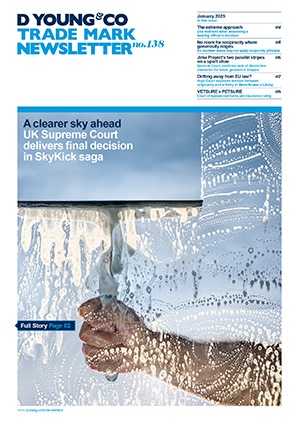Stealth mode: acquiring an earlier registration cannot substitute infringement with genuine use
In UK High Court proceedings concerning the use of the STEALTH and STEALTH VR trade marks in relation to video game headsets by ABP Technology Ltd and Voyetra Turtle Beach, Mr Justice Miles rejected the claimant’s summary judgment application and partially allowed the defendants’ proposed amendments to their defence and counterclaim. As a result, the defendants could rely on an earlier trade mark acquired from a third party in the course of the proceedings. However, they could not claim that their use of the STEALTH sign pre-acquisition constituted use of the newly-acquired mark which is likely to have implications for their attack on the validity attack of the claimant’s later STEALTH registration.
Background
The claimant used the STEALTH mark from mid-2014 and registered UK trade marks nos. 3211021 STEALTH and 3476958 STEALTH VR in relation to audio headsets for playing video games in February 2017 and March 2020 respectively. The defendants started using the STEALTH sign in relation to video game headsets a few months later. This formed the basis of the claimant’s trade mark infringement action brought under sections 10(1) and 10(2) of the Trade Marks Act 1994 (TMA) in November 2020, and the defendants’ honest concurrent use argument relied on in their defence (filed in February 2021).
In July 2021, the defendants proposed to amend their defence to reflect their acquisition of UK Trade Mark no. 2014250 STEALTH (mark-250), registered in 1996 in relation to hi-fi apparatus, instruments and loudspeakers. Mark-250 was assigned to Name Creations Limited in January 2021, licensed in March and then assigned to the defendants in June. The defendants sought to deploy mark-250 as a sword and shield: to contend the claimant’s marks are invalid, and to provide a defence to trade mark infringement.
Summary judgment
Rejecting the application for summary judgment, Mr Justice Miles was not satisfied that the defendant lacked a real prospect of successfully defending the claim on the basis of honest concurrent use. In denying the application, Mr Justice Miles noted that the defence does not simply turn on a minimum period of use but also other factors such as consumers’ understanding of the use of the marks by different businesses.
Permission to amend
Whilst mark-250 had not been used in the five years prior to January 2021 (prior to its acquisition), the claimant was unable to revoke the mark for non-use. This is because under section 46(3) of the TMA any use of a mark which has not been used for over five years and which falls within the three months prior to the filing of a revocation action cannot be relied on to prove genuine use if the proprietor was aware that an application for revocation was likely to be made. However, if the use resumed before the three-month period, it can be relied on.
In this instance, the defendants recorded the transfer of mark-250 at the UKIPO in June (whereas the licence term commenced in January 2021) and proposed to amend their defence to rely on this mark in July 2021. The defendants could therefore claim that they started using mark-250 in January (which took them outside the three-month period mentioned in the TMA). The claimant argued the amendment should not be permitted as the defendants deliberately structured the sequence of events so that their use of mark-250 took place outside of the three-month period. The claimant sought to invoke the court’s discretionary powers, stating that the proposed amendments, based on a plan to covertly acquire mark-250 in the infringement proceedings, would lead to irremediable damage to the claimant who would not be able to launch a revocation action.
The defendants submitted they were not under any obligation to bring forward the amendments until they became the proprietors of mark-250 in June 2021.
The court agreed it was reasonable to amend once legal title had been acquired and that the non-disclosure of the acquisition at the time did not contravene any procedural requirements or constitute abuse of process.
The proposed amendments also included an invalidity challenge against the claimant’s registrations, which stated that the defendants’ use of the STEALTH sign constituted use of mark-250 from 2014 onwards. Siding with the claimant, the court considered that this arrangement constituted a “fiction”. The change of mark-250’s ownership cannot expunge the events from 2014 onwards, which should be assessed in their proper historical context. This counterclaim was not permitted. However, the counterclaim that the claimant’s trade marks infringe mark-250 was permitted.
In short
The decision is a cautionary tale for defendants who seek to rely on the acquisition of earlier third-party rights (which have not been used) to mount an invalidity challenge against later registrations.


